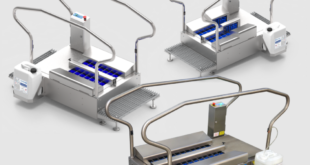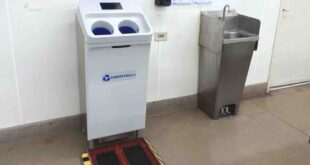The trend toward electric mobility and sustainable energy solutions that is — crucially — helped by the automotive sector’s expertise in battery technology. Simon Farnfield explains why collaboration across different industries is the key factor in advancing technology in a more efficient and accessible way
Cross-industry collaboration plays an important role in leading technological advancement and broadening access to innovation. When companies from different sectors work together, they bring much needed perspectives, skills and resources that not only lead to breakthrough technologies, but a quicker route to engineering advancements too. Therefore, I believe that a collective approach is more than just the sum of its parts, it’s what accelerates development.
Successful collaborations
In keeping with the battery theme, marine companies that partner with battery OEMs (Original Equipment Manufacturers) can ensure their systems are precisely engineered to meet their specific needs, while retaining flexibility in battery selection.
A notable example of this is the partnership between Torqeedo and BMW, where automotive-grade batteries are being used to power marine vessels. This partnership led to the development of the Deep Blue 80, a high-performance drive with a lithium iron phosphate (LFP) battery from Torqeedo for its Deep Blue series of high-performance electric drives.
LFP batteries are generally safer compared to other lithium-based batteries because they are more stable and have a lower risk of overheating or thermal runaway. However, they tend to be less energy-dense, making them suitable for marine applications, where safety is a primary concern.
As reported by Boatshed.com, another collaboration is seeing Ed-TEC partner with battery specialists, e.battery systems (EBS), to create a high-capacity battery with efficient cooling. For context, the “C factor” in batteries is a crucial concept that measures the rate at which a battery can safely charge and discharge its stored energy over time.
This quantifies the amount of current — typically expressed as a multiple of the battery’s capacity — that the battery can handle without causing damage or overheating. For instance, if a battery has a capacity rating of 1C, it means it can discharge its entire capacity in one hour. Conversely, a battery with a rating of 2C can discharge at twice the rate, enabling it to discharge 20 Amps for 30 minutes.
A higher C factor is crucial for high-power applications like electric marine propulsion, but most battery concepts operate at 2C. Here, an 80 kWh battery provides 160 kW of continuous power, which may not be enough for high-power demands.
Therefore, Ed-TEC required a 5C rating or higher for significant power output. According to the International Boat Industry, a high-capacity battery with efficient cooling is being designed in partnership with EBS, using oil cooling via a heat exchanger to enable a higher C factor without causing hot spots in cell bonding.
Industry ecosystems
In 2014, Chinese e-commerce giant Alibaba went public in what was the largest Initial Public Offering (IPO) in history. Analysts reviewing Alibaba’s prospectus, such as those from IDC, observed that the document mentioned the term “ecosystems” over 150 times, indicating that they play a crucial role in Alibaba’s strategy.
Now, research from IDC indicates that 60 per cent of worldwide organisations have identified industry ecosystems as priority investments that will ensure long-term resilience and success. An industry ecosystem is the network of organisations involved in the delivery of a specific product or service through both competition and co-operation.
For example, MISUMI, a well-known manufacturer and distributor of mechanical parts, launched a platform called “meviy” to accelerate and streamline the procurement process for original, non-standardised parts. This innovative ecosystem allows customers to upload 3D data for their parts, which the system’s artificial intelligence (AI) then analyses to understand the shape, check production requirements and instantly provide a price and quote.
What is more, the flexibility and efficiency of meviy has enabled MISUMI to collaborate with other companies to meet the growing demand for custom parts production. For instance, MISUMI’s partnership with Protolabs, a leader in rapid prototyping, allows for quick turnaround times on prototype parts, which is crucial for product development and innovation.
MISUMI is also adding new features to meviy through joint development with Toyota, a major automotive manufacturer and heavy user of the platform. By working with Toyota, MISUMI gains valuable insights into the requirements of the automotive sector, enabling them to improve the platform’s functionality and offer enhanced features that meet industry standards.
In an era where cross-industry collaboration is becoming increasingly important, bringing different sectors together and encouraging the exchange of knowledge and resources is essential. Thankfully, trade shows act as the bridge to bringing this expertise together in one space.
Events, like Advanced Engineering, play a role in fostering collaboration across industries because it provides a platform where professionals from various sectors can unite to share knowledge and build partnerships.
Simon Farnfield is event director at Advanced Engineering. Advanced Engineering 2024 takes place on 30th-31st October 2024 the NEC, Birmingham, UK.
 Engineer News Network The ultimate online news and information resource for today’s engineer
Engineer News Network The ultimate online news and information resource for today’s engineer




